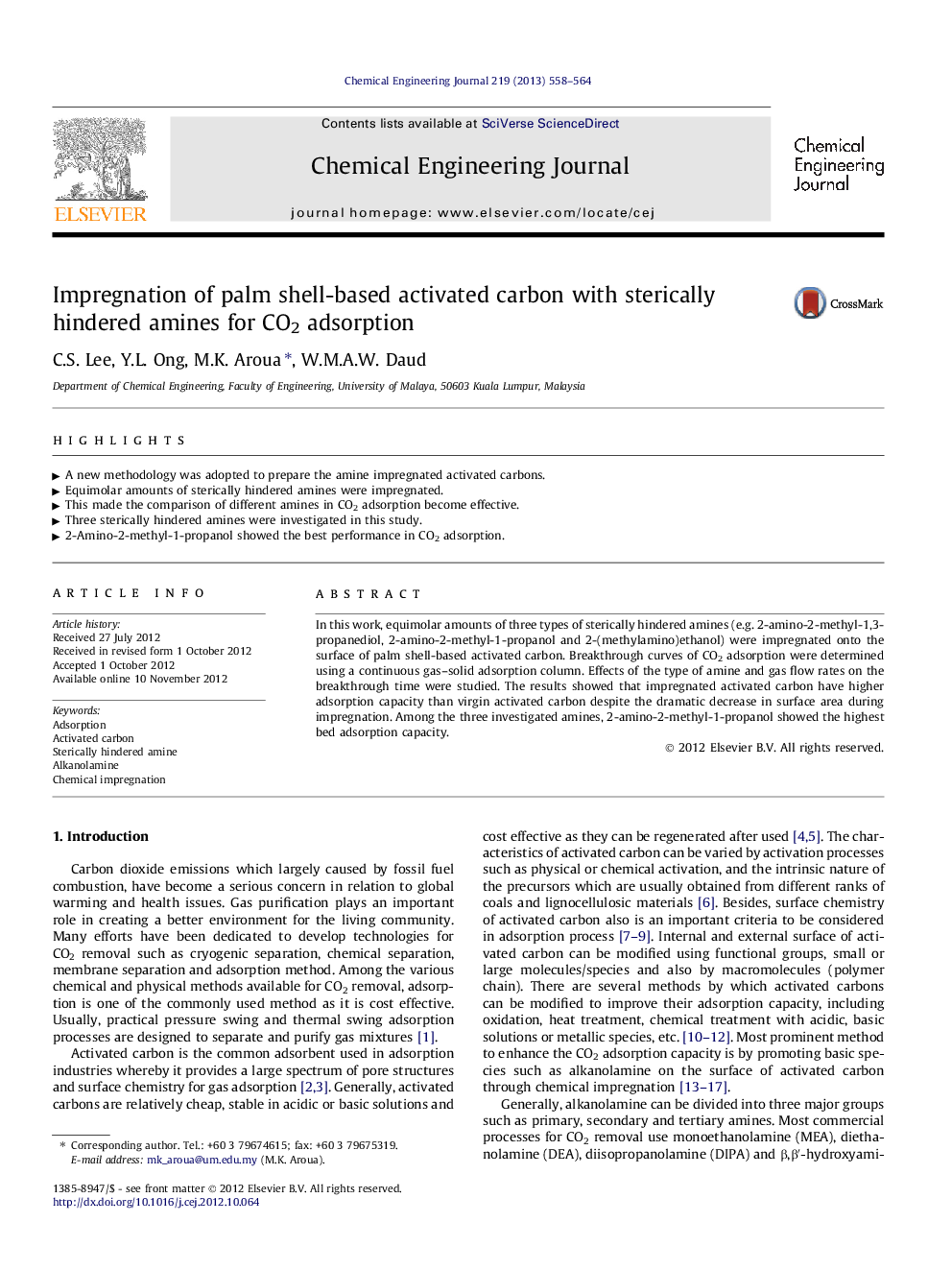| Article ID | Journal | Published Year | Pages | File Type |
|---|---|---|---|---|
| 148914 | Chemical Engineering Journal | 2013 | 7 Pages |
In this work, equimolar amounts of three types of sterically hindered amines (e.g. 2-amino-2-methyl-1,3-propanediol, 2-amino-2-methyl-1-propanol and 2-(methylamino)ethanol) were impregnated onto the surface of palm shell-based activated carbon. Breakthrough curves of CO2 adsorption were determined using a continuous gas–solid adsorption column. Effects of the type of amine and gas flow rates on the breakthrough time were studied. The results showed that impregnated activated carbon have higher adsorption capacity than virgin activated carbon despite the dramatic decrease in surface area during impregnation. Among the three investigated amines, 2-amino-2-methyl-1-propanol showed the highest bed adsorption capacity.
► A new methodology was adopted to prepare the amine impregnated activated carbons. ► Equimolar amounts of sterically hindered amines were impregnated. ► This made the comparison of different amines in CO2 adsorption become effective. ► Three sterically hindered amines were investigated in this study. ► 2-Amino-2-methyl-1-propanol showed the best performance in CO2 adsorption.
